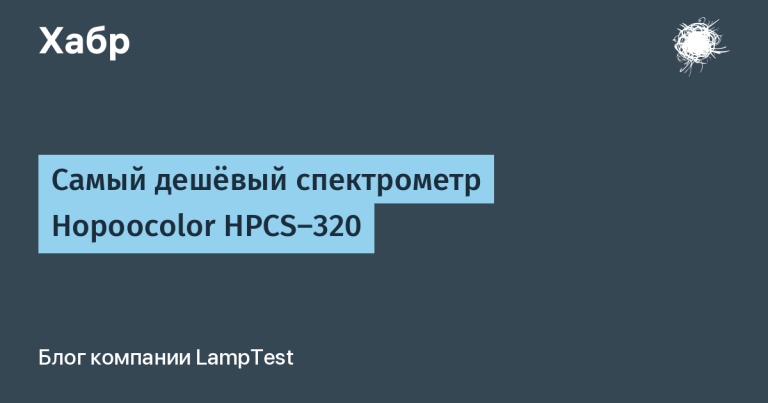K-probability density distribution. Unicorn among all distributions
It is noteworthy that at present in the domestic scientific literature the K-distribution is mentioned extremely rarely, and if it is mentioned, it is casually and in a very short form. It should be noted that recently, an article about him appeared on Wikipedia, again in a short summary. Accordingly, it is difficult to understand anything from it, especially for a person who is not familiar with mathematical statistics, or simply who has forgotten this area of scientific knowledge. Also, if you start looking for information in search engines, you may stumble upon my articles in scientific journals, where I study the K-distribution. The material may be of interest to specialists in the field of mathematics, data analysts, developers, as well as specialists in the field of radio electronic and telecommunication systems.
Below I will describe the K-probability density distribution, I will tell you what it is mainly used for and what it describes. I hope that you will learn something new for yourself from this text.
Several years ago, during my postgraduate studies, I had a need to consider the effect of radar interference from an agitated sea surface on the quality of detection by radar stations of small objects located on an agitated sea surface.
Having studied a lot of foreign and domestic literature on interfering radar reflections from an agitated water surface, I learned about the K-distribution. As I mentioned above, it turned out that the K-distribution is described in detail only in foreign literature. [1-6]…
Let us describe the K-distribution in relation to radar interference from the sea surface. For interest, consider it in the context of the radar field in which it was originally used and invented. If we do not consider the context, then in an impersonal form, the output will be exactly the same, only instead of the envelope of interference from the sea (the envelope is understood as the usual modulus of the received signal, in our case, interfering reflections from the sea), denoted below as E, there will be an impersonal random variable.
It is known that for radars with long probing pulses, when a section of the sea surface is irradiated that is much larger than the length of the sea wave, the amplitude of sea noise has a Gaussian distribution, and their envelope has a Rayleigh distribution. The envelope is a module. As the duration of the probing pulses decreases, that is, with an increase in the range resolution of the radar, as well as with a significant influence of small grazing angles (the angle between the sea surface and the radar beam), the distribution of the interference amplitude becomes non-Gaussian, and the envelope distribution law, which is characterized by a longer the “tail” of the distribution differs significantly from the Rayleigh one.
Partially suitable statistical models of marine reflections based on the log-normal and Weibull distributions have found application only through experimental studies of marine reflections and are not based on a physical understanding of the mechanisms of their occurrence. Another distribution that is becoming more and more popular is the composite K-distribution, which has an advantage over other marine reflection models. The K-distribution model of interference has a theoretical basis and a physical interpretation.
In the course of practical research in various conditions, it was found that the emitted signals are mainly scattered by ripples on the sea surface. Larger structures that appear on the sea surface, which can be called gravitational waves, as well as “lambs”, sharp edges of waves before collapse, splashes and foam after the collapse of rolling waves lead to a change in the power level of reflections [1-3]… Thus, the interference envelope for maritime radars with short probing pulses and high resolution can be well described by two components. The first component is based on the Rayleigh distribution.
The second component changes the local average power (variance) of the first component, i.e. the strength of sea reflections changes due to the influence of larger irregularities on the sea surface. The local average power varies over time, and from bin to bin. This component is described by a gamma distribution.
Let us write the formula for the gamma distribution of the probability density as a dependence on the power of the received interference x… The formula will play an important role in modeling interference from structures of marine irregularities for short-pulse radars.
where b – scale factor or “scale” parameter; v – the shape parameter is determined by the observation conditions and the parameters of the locator [3]; G(v) – gamma function.
Let us write down the probability distribution density of the Rayleigh process
where E is the envelope of the received signal (its modulus).
Let’s average the Rayleigh process P (E | x) gamma distribution Pc (x)
Then the formula for the K-distribution will have the form
K-function or the so-called modified Bessel function, which is present in the formula and gives the name of the model.
The moments of the K-distribution envelope are found by the formula [1, 2]:
Also known is the probability density of the envelope E additive mixture of K-interference with Gaussian noise, for example, internal noise of a radio receiver [1]
where Pn – power (dispersion) of Gaussian noise (in our case, a radar receiver).
Power (aka dispersion) Pp interference with K-distribution of the envelope is determined by the parameters ν and b, as the second initial moment of its envelope, namely the dependence [1]:
Then the power (variance) of the mixture of interference with Gaussian noise is related to the distribution parameters by the dependence:
The figure shows the form of the K-distribution of the probability density of the envelope values E (well, or an impersonal random variable, whichever is more convenient for you) without a mixture with Gaussian noise for different values its parameters v and b.
Recently I have been using Python for mathematical modeling, calculations and data processing. I really like him. And of course, I have not found a sensor in any of the libraries intended for mathematical calculations that could produce random numbers with a K-probability density distribution. But you can do it yourself. If the respected public is interested, then I will write another article where we will mathematically derive formulas for generating random numbers with a K-probability density distribution, in order to make our own generator of such numbers (the above formulas do not generate such numbers, they only describe density of the probability distribution depending on the distribution parameters), which could be used for experiments, and also show that the obtained values really have a K-distribution (we will do everything, of course, in Python). If you would be interested, write in the comments.
For those who are especially curious, I give a list of sources:
1. Ward K. Sea clutter: scattering, the K distribution and radar performance. 2nd edition. Croydon, CPI Group Ltd, 2013.586 p.
2. Watts S. The modeling of radar sea clutter. A thesis submitted to the University of Birgingham for the degree of doctor of science. University of Birmingham, 2013.27 p.
3. Antipov I. Analysis of sea clutter returns. Salisbury, DSTO Electronic and surveillance research laboratory, 1998.45 p.
4. Antipov I. Simulation of sea clutter returns. Salisbury, DSTO Electronic and surveillance research laboratory, 1998.71 p.
5. Ward K, Baker C, Watts S. Maritime surveillance radar. Part 1: Radar scattering from the ocean surface. IEE Proc, 1990, No. 2, pp. 51-62.
6. Ryan J., Johnson M. Radar performance prediction for target detection at sea. IEE Proc, 1992, No. 365, pp. 13-17.





